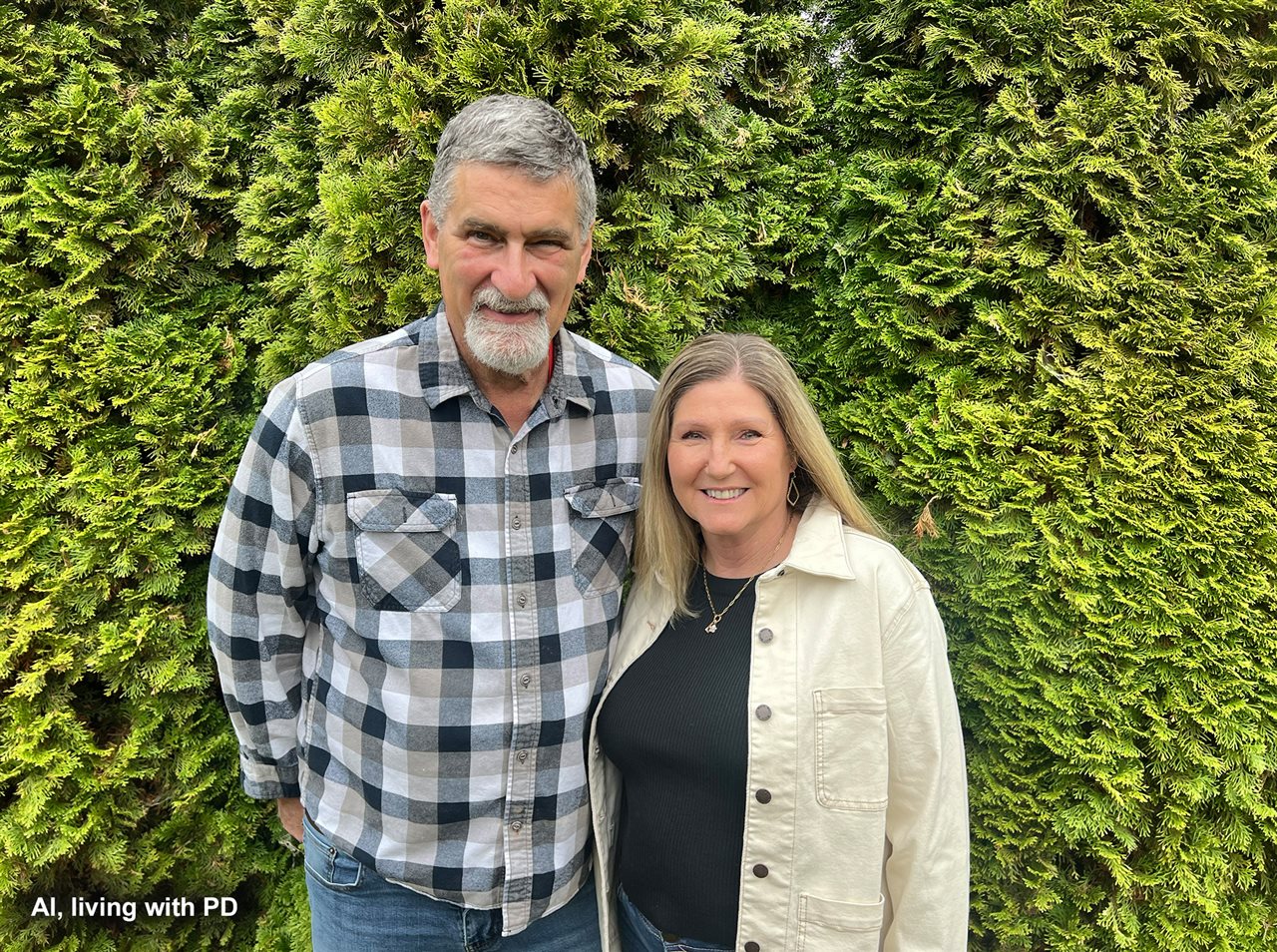Treatment developments show promise amid rising Parkinson's diagnoses
(BPT) - Sponsored by Supernus Pharmaceuticals
Parkinson's disease is on the rise, with U.S. diagnoses expected to reach 1.2 million by 2030. As the most common movement disorder and second most common neurodegenerative disorder, Parkinson's impacts many individuals' lives, whether they're a person with Parkinson's, a care partner or loved one. With research and development efforts in full swing, treatments are becoming increasingly available.
As a neurodegenerative disorder, Parkinson's affects the brain, causing a person to make less dopamine, which can result in tremors, muscle rigidity and difficulties with movement and balance. Although there is no known cure for Parkinson's, there are treatments available to help reduce symptoms.
These treatments, such as oral carbidopa/levodopa, can help manage symptoms and replace lost dopamine, but after a few years, don't work as well as they once did. This results in OFF time, when Parkinson's symptoms (like tremors, stiffness, slowness, etc.) are not adequately controlled with oral carbidopa/levodopa. Other Parkinson's medications are often added on to help with OFF time, but despite these treatment changes, OFF continues to disrupt a person's day-to-day life. Nearly all people with Parkinson's experience OFF time at 10 years.
With incidence rates rising, more treatments are being developed to help manage Parkinson's symptoms and control daily OFF time, including Supernus' Onapgo™ (apomorphine HCl), a prescription medicine used to treat motor fluctuations (OFF episodes) in adults with advanced Parkinson's disease. It is not known if Onapgo is safe and effective in children. Onapgo helps people with Parkinson's have all-day (e.g., waking day, around 16 hours) control of their OFF time.
IMPORTANT SAFETY INFORMATION
Do not take Onapgo if you are:
• taking certain medicines to treat nausea (ondansetron, granisetron, dolasetron, palonosetron) and alosetron. People taking ondansetron with apomorphine had very low blood pressure and lost consciousness (blacked out).
• allergic to apomorphine or to any ingredients in Onapgo including sulfite. Sulfites can cause severe, life-threatening allergic reactions, especially in people with asthma.
Call your healthcare provider or get emergency help right away if you have any of the following symptoms of severe life-threatening allergic reaction:
• hives • itching • rash • swelling (eyes, tongue, lips, or mouth) • chest pain • throat tightness • trouble breathing or swallowing.

Al's story
Al, who participated in the U.S.-based clinical trial, experienced his first Parkinson's symptoms back in 2011.
"A tremor developed in my right hand that was prevalent while drinking and shaving," Al said. "My handwriting got worse and noticeably smaller."
Although these can be the first signs of Parkinson's, Al attributed these symptoms to too much caffeine and long periods of time on a keyboard.
But Al's symptoms continued to worsen.
His primary care physician recommended that Al make an appointment with a neurologist.
"After looking at my medical history and based on his observations, he told me he suspected I had Parkinson's and prescribed carbidopa/levodopa to treat my symptoms."
Although carbidopa/levodopa initially managed Al's symptoms early on, they continued to worsen, affecting his daily activities and one of his favorite hobbies, biking. But that didn't discourage Al. He went into action and "made charts and graphs tracking the peaks and low points, which quickly pointed to times between doses of medication." Al reported, "my OFF symptoms, which included a general slowness accompanied by stiffness, along with episodes of dystonia (sustained or repetitive muscle twisting, spasms or cramps) in my feet, were becoming increasingly frustrating, inconvenient and, at times, painful."
Since Al was having four to five OFF episodes a day and also experiencing dyskinesia (involuntary, erratic, writhing movements of the face, arms, legs or trunk), he saw a third neurologist - this time, a movement disorder specialist (MDS). His MDS informed Al of a clinical trial investigating an all-day continuous treatment that could help manage OFF time.
"He showed us what the device looked like and how I would wear it," Al said. "I was already intrigued after that discussion with my MDS, but I was even more encouraged after I met someone who had already started the trial and was using the device. I realized that it could be the treatment I was looking for."

Onapgo is a wearable infusion device that continuously delivers apomorphine under the skin (subcutaneously). The dose is tailored to a patient's needs, and no surgery is required - it's generally applied in the morning and taken off at bedtime.
Before you start using Onapgo, tell your healthcare provider about all of your medical conditions, including:
• difficulty staying awake during the daytime • dizziness, fainting spells, or low blood pressure • asthma
• allergies to any medicines containing sulfites • heart problems • a history of stroke or other brain problems
• kidney problems • liver problems • a mental problem called a major psychotic disorder • drinking alcohol • if you are pregnant or plan to become pregnant, or breastfeeding or plan to breastfeed. It is not known if Onapgo will harm your unborn baby or pass into your breast milk.
Tell your healthcare provider about all the medicines you take, including prescription and non-prescription (over-the-counter) medicines, vitamins, and herbal supplements. Onapgo and certain other medicines may affect each other and cause serious side effects.
• If you take nitroglycerin under your tongue (sublingual) while using Onapgo, your blood pressure may decrease and cause dizziness. If possible, lie down before taking it and then try to continue lying down for at least 45 minutes after.
Important Safety Information continued below.
Before starting the trial, Al and his doctor discussed the potential benefits, risks and some of the common side effects. "It sounded like a good option for me, and we decided to move forward with the treatment."
Lisa, Al's wife, was by his side throughout the journey she calls "navigating Parkinson's." Although it was difficult at times, exploring treatment options had the potential to help Al have more consistent Parkinson's symptom management.
With Onapgo, "I have more consistent control of my OFF time, making my days more predictable," Al said. "With more GOOD ON time each day, I can continue doing activities like indoor biking and playing with the grandkids."
With Onapgo, Al feels like he has more flexibility in his day.
"I like that the device is discreet and easy to carry around with me," he said. "We've gotten creative and started putting it in phone cases so I can keep it clipped to my belt because it's relatively small."
Lisa added, "by having this continuous infusion throughout the day, Al has better control of his Parkinson's symptoms, and as his care partner, that consistency is comforting to me. He's able to be more independent, which gives me better peace of mind."
If you have Parkinson's disease and struggle with ups and downs in your day due to OFF time, talk to your doctor about Onapgo to see if it may be right for you.

IMPORTANT SAFETY INFORMATION (CONTINUED)
What should I avoid while using Onapgo?
• Do not drink alcohol. It can increase your chance of developing serious side effects.
• Do not take medicines that make you sleepy.
• Do notdrive, operate machinery, or do other dangerous activities until you know how Onapgo affects you.
• Do not change your position too fast, get up slowly from sitting or lying. Onapgo can lower blood pressure and cause dizziness or fainting.
What are the possible side effects of Onapgo?
Onapgo may cause serious side effects, including:
• blood clots. Infusing Onapgo into a vein (intravenous) can cause blood clots. Do not infuse Onapgo in your vein.
• nausea and vomiting are common. May be serious or severe. Your healthcare provider may prescribe medicine (trimethobenzamide) to help decrease nausea/vomiting. Follow your healthcare provider's instructions on how to take/when to stop this medicine.
• sleepiness or falling asleep during the day is common and may be serious. Some people may get sleepy during the day or fall asleep without warning while doing everyday activities such as talking, eating, or driving.
• dizziness is common and may be serious. Onapgo can lower your blood pressure and cause dizziness. Dizziness can happen when treatment is started or when the dose is increased. Do not get up too fast from sitting or lying down, especially if you have been sitting or lying down for a long time.
• falls. Changes that can happen with PD, and effects of some PD medicines, including Onapgo, as well as trimethobenzamide, can increase your risk of falling.
• infusion site reaction is common and may be serious. Reactions and infections including infusion site nodules, redness, bruising, swelling, rash, and itching may happen
• hallucinations or psychotic-like behavior. Onapgo can cause/worsen psychotic-like behavior including hallucinations (seeing or hearing things that are not real), confusion, excessive suspicion, aggressive behavior, agitation, delusional beliefs (believing things that are not real), and disorganized thinking.
• sudden uncontrolled movements (dyskinesia) are common and may be serious. Some people with PD may get sudden, uncontrolled movements after treatment with some PD medicines. Onapgo can cause/make dyskinesia worse.
• low red blood cells (hemolytic anemia). Tell your healthcare provider if you have: become pale, fast heartbeat, feel more tired or weaker than usual, skin or eyes look yellow, chest pain, shortness of breath or trouble breathing, dark-colored urine, fever, dizziness, or confusion.
• strong (intense) urges. New or increased gambling urges, sexual urges, and other intense urges have been reported.
• heart problems. If you have shortness of breath, fast heartbeat, or chest pain, call your healthcare provider or get emergency help right away.
• serious heart rhythm changes (QT prolongation). Tell your healthcare provider right away if you have a change in your heartbeat (a fast or irregular heartbeat), or faint.
• allergic reaction.Tell your healthcare provider or get medical help right away if you get hives, itching, rash, swelling of the eyes and tongue, or trouble breathing.
• tissue changes (fibrotic complications). Some people have had changes in the tissues of their pelvis, lungs, and heart valves when taking medicines called non-ergot derived dopamine agonists like Onapgo.
• prolonged painful erections (priapism). May occur. If you have an erection that lasts more than 4 hours, call your healthcare provider or go to the nearest hospital emergency room right away.
Other common side effects of Onapgo include headache and trouble falling asleep or staying asleep (insomnia).
You are encouraged to report negative side effects of prescription drugs to the FDA. Visit www.fda.gov/medwatch, or call 1-800-FDA-1088.
Patients and care partners must receive complete instructions on the proper use of Onapgo. Please see Patient Information and Patient Instructions for Use and talk to your healthcare provider.
Source: BrandPoint



















